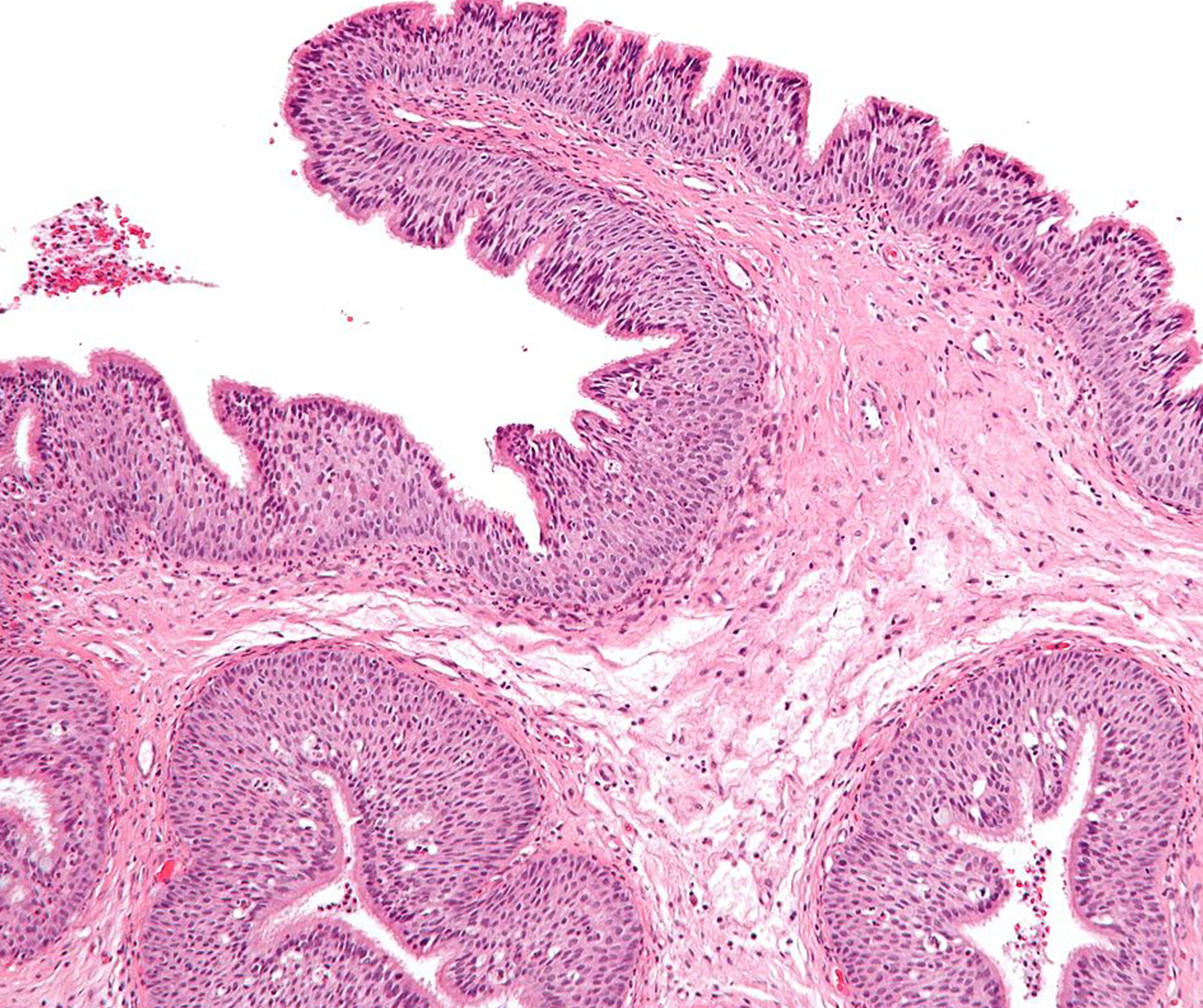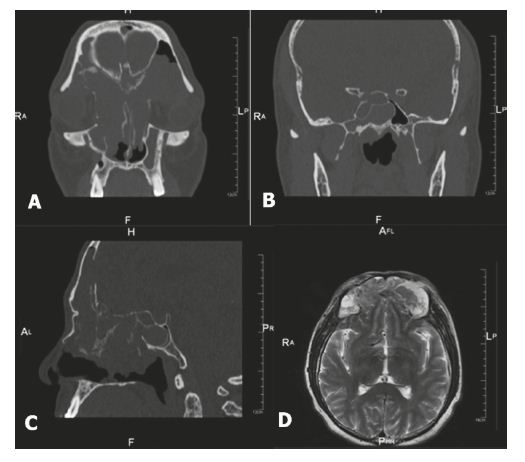Recurrent and bilateral inverted sinonasal papilloma with intraorbital and intracranial extension. A case report
DOI:
https://doi.org/10.17533/udea.iatreia.v29n3a11Keywords:
inverted papilloma, nasal cavityAbstract
Inverted papilloma (IP) is a relatively rare neoplasm of the nasal cavity and paranasal sinuses. Although it is considered a benign tumor, its biological behavior is not so benign because of local aggressive growth, high recurrence rate, and risk of malignant transformation with associated carcinoma. Therefore, it requires complete surgical removal and long term postoperative follow-up. Bilateral IP is unusual and even more so when associated with simultaneous intra-orbital and intra-cranial extensions. These extremely aggressive behaviors have been separately reported in the literature, especially in recurrent cases. Report of cases with bilateral and multifocal involvement without malignancy has been exceptional. Surgical management in these cases includes an endonasal endoscopic approach combined with external approaches, either conventional or endoscopic minitrepanation. Intensity modulated radiation therapy can be useful in patients with incompletely resected disease. A case of this rare disease is reported.
Downloads
References
(1.) Ridder GJ, Behringer S, Kayser G, Pfeiffer J. [Malignancies arising in sinonasal inverted papillomas]. Laryngorhinootologie. 2008 Nov;87(11):783-90. DOI 10.1055/s-2008-1077292. German.
(2.) Phillips PP, Gustafson RO, Facer GW. The clinical behavior of inverting papilloma of the nose and paranasal sinuses: report of 112 cases and review of the literature. Laryngoscope. 1990 May;100(5):463-9.
(3.) Hyams VJ. Papillomas of the nasal cavity and paranasal sinuses. A clinicopathological study of 315 cases. Ann Otol Rhinol Laryngol. 1971 Apr;80(2):192-206.
(4.) Yiotakis J, Hantzakos A, Kandiloros D, Ferekidis E. A rare location of bilateral inverted papilloma of the nose and paranasal sinuses. Rhinology. 2002 Dec;40(4):220-2.
(5.) Mirza S, Bradley PJ, Acharya A, Stacey M, Jones NS. Sinonasal inverted papillomas: recurrence, and synchronous and metachronous malignancy. J Laryngol Otol. 2007 Sep;121(9):857-64.
(6.) Murphy JT, Chandran A, Strachan DR, Sood S. Bilateral inverted papilloma: A report of two cases and review of the current literature. Indian J Otolaryngol Head Neck Surg. 2010 Sep;62(3):313-6. DOI 10.1007/s12070-010-0079-4.
(7.) Visvanathan V, Wallace H, Chumas P, Makura ZG. An unusual presentation of inverted papilloma: case report and literature review. J Laryngol Otol. 2010 Jan;124(1):101-4. DOI 10.1017/S0022215109990703.
(8.) Vural E, Suen JY, Hanna E. Intracranial extension of inverted papilloma: An unusual and potentially fatal complication. Head Neck. 1999 Dec;21(8):703-6.
(9.) Wright EJ, Chernichenko N, Ocal E, Moliterno J, Bulsara KR, Judson BL. Benign inverted papilloma with intracranial extension: prognostic factors and outcomes. Skull Base Rep. 2011 Nov;1(2):145-50. DOI 10.1055/s-0031-1287687.
(10.) Wang Y, Zheng J, Hu Y, Li G, Yang Z. [The nasosinus inverted papilloma with intracranial extension]. Lin Chuang Er Bi Yan Hou Ke Za Zhi. 2002 May;16(5):196-7. Chinese.
(11.) Hug EB, Wang CC, Montgomery WW, Goodman ML. Management of inverted papilloma of the nasal cavity and paranasal sinuses: importance of radiation therapy. Int J Radiat Oncol Biol Phys. 1993 Apr;26(1):67-72.
(12.) Gomez JA, Mendenhall WM, Tannehill SP, Stringer SP, Cassisi NJ. Radiation therapy in inverted papillomas of the nasal cavity and paranasal sinuses. Am J Otolaryngol. 2000 May-Jun;21(3):174-8.
(13.) Strojan P, Jereb S, Borsos I, But-Hadzic J, Zidar N. Radiotherapy for inverted papilloma: a case report and review of the literature. Radiol Oncol. 2013 Mar;47(1):71-6. DOI 10.2478/v10019-012-0045-8.

Published
How to Cite
Issue
Section
License
Copyright (c) 2016 Iatreia

This work is licensed under a Creative Commons Attribution-ShareAlike 4.0 International License.
Papers published in the journal are available for use under the Creative Commons license, specifically Attribution-NonCommercial-ShareAlike 4.0 International.
The papers must be unpublished and sent exclusively to the Journal Iatreia; the author uploading the contribution is required to submit two fully completed formats: article submission and authorship responsibility.
















